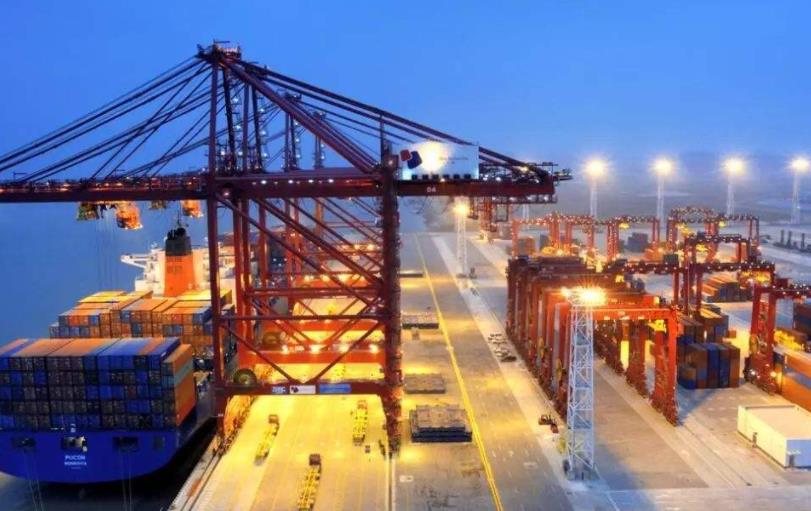经济学Essay参考案例:An Analysis of Infrastructure Development in India

本文是经济学专业的Essay范例,题目是“An Analysis of Infrastructure Development in India(印度基础设施发展分析)”,基础设施建设对一个国家的经济发展起着非常重要的作用。以其他国家为例,快速增长的经济推动需求,并导致基础设施建设的更快发展。然而,印度的情况有点令人失望,根据IMF的数据,印度目前在139个国家的基础设施质量排名中排名第91位,尽管印度一直被认为是仅次于中国的增长潜力最大的国家。最糟糕的是,低质量的基础设施体系成为印度进入发达国家世界和让公民摆脱贫困的障碍。下面将总结这种表现不佳的原因,并讨论发展道路上的潜力和处理。
Infrastructure development plays a very significant role in its economic growth of a nation. Taking examples from other countries, a fast growing economy drive demand and lead to an even faster development of infrastructure. However, India’s case is a bit disappointing, which currently ranked 91st out of 139 nations in quality of infrastructure according to IMF, though India has always been quoted as the country with highest growth potential after China. The worst is low quality infrastructure system becomes an obstacles presenting India from breaking into the world of developed nations and bringing the citizens out of poverty. The following will summarize the reason for this underperformance and discuss the potential and treat along the path of development.

Summary of excerpts总结摘录
Numerous problems now causing the failure of India’s infrastructure are land clearance issues; insufficient compensation, unclear regulations, access to financing etc. After all, Indian’s philosophical attitude and the democracy system contribute a deep-rooted cause on the failure. Comparing with China, China used infrastructure as a policy instrument and political tool to reduce poverty and generate growth trading off with the cost of enlarged inequality and huge regional disparity, while India emphasis more on redistribution which proved to be unsuccessful for it is self-destroying the impetus to generate robust and sustained growth. China managed to have strong integration and coordination between policy-making and implementation. India is more technical rather then political driven and adopt a more participatory and democratic approach, causing duplication of responsibilities and weakened accountability among different levels of government and political parties, resulting in inefficient implementation and resource allocation.
现在导致印度基础设施失败的众多问题是土地清理问题;薪酬不足,监管不明确,融资渠道等。毕竟,印度人的哲学态度和民主制度是其失败的深层原因。与中国相比,中国将基础设施作为一种政策工具和政治工具,以减少贫困和促进增长为代价,以扩大不平等和巨大的地区差距为代价,而印度更强调再分配,这被证明是不成功的,因为这是自我毁灭,产生强劲和持续增长的动力。中国的政策制定和实施实现了很强的一体化和协调性。印度更多的是技术而不是政治驱动,采用了一种更有参与性和民主的方法,导致了不同级别政府和政党之间的责任重复和责任弱化,导致了低效的执行和资源分配。
Nevertheless, Indian Government did have a strong will in growing infrastructure. Structural and procedural reforms at various government levels have been taken place to facilitate infrastructure growth. Apart from local private capital and return from public user fees, Indian Government acknowledge that foreign investment is major source of investment into infrastructure sector, therefore she is providing more flexibility towards capital flow and is setting policy to lower the risk and increase private capital return.
Though the potential is promising, India inevitably face different present and future challenges during the path. Over the subsidy and investment issues, a good economic as well as incentive balance between tax-payers, public users, private local and foreign investors must be strived for. Consequently, pricing, tax regimes, stability in exchange rate and real interest rates will be the other conditions to formulate the model. Also, a transparent and equitable regulatory framework, reliable judicial system with efficient dispute resolution mechanism will be vital. Given Indian democracy has got its stand in the decade of poverty, it will be a real challenge for this system to prove that it can lead the way to growing prosperity over this transition path.
尽管潜力巨大,但在这条道路上,印度不可避免地会面临不同的当前和未来挑战。在补贴和投资问题上,必须争取在纳税人、公共使用者、本地私人和外国投资者之间取得良好的经济和激励平衡。因此,定价、税收制度、汇率稳定和实际利率将是制定模型的其他条件。此外,一个透明和公平的监管框架、可靠的司法系统和有效的争端解决机制也至关重要。鉴于印度的民主制度在贫困的十年中站稳了立场,要证明它能够在这条过渡道路上引领印度走向繁荣,将是一个真正的挑战。
Introduction on India inward and outward international investment印度对外投资和对外投资概况
FDI can leverage development efforts in a number of ways, including boosting export competitiveness; generating employment and strengthening the skill base as well as enhancing technological capabilities, enriching financial resources for development and help integrating a country in the international trading system and eventually promoting a more competitive business environment. Following an overview of the infrastructure development in India, it is again a bit disappointing to find that inward and outward international investment sector have not been developing on its full potential either. According to United Nations Conference on trade and Development’s report, India’s FDI inflow in 2008-2009 is in the ninth place, behind Russia Germany and Saudi Arabia, while China is in the second place just behind US. For FDI outflows, India is not among the 20 top economies. The next part will summarize the performance of India in this area and discuss the problem and potential for growth.
外国直接投资可以以多种方式利用发展努力,包括提高出口竞争力;创造就业机会,加强技能基础,提高技术能力,丰富发展的财政资源,帮助一个国家融入国际贸易体系,并最终促进一个更具竞争力的商业环境。回顾印度基础设施的发展,再次令人失望的是,国内外的国际投资部门也没有充分发挥其潜力。根据联合国贸易和发展会议(United Nations Conference on trade and Development)的报告,2008-2009年,印度的FDI流入排在第九位,排在俄罗斯、德国和沙特阿拉伯之后,而中国排在第二位,仅次于美国。就FDI外流而言,印度不在前20大经济体之列。下一部分将总结印度在这一领域的表现,并讨论问题和增长潜力。
Summary of excerpts总结摘录
India’s outbound FDI has been functional and is market oriented rather than political. For example, investment aiming at acquiring raw material, acquisitions in the IT and IT services sectors to leverage IT development. Skewing towards the service sector and towards countries with high income and established large markets are found in India’s OFDI. This also explains why Indian OFDI went down during financial crisis in 2009 while Chinese OFDI doubled. Indicating that China’s OFDI is mainly political, and depending on her own security and economic interests rather than inducing by market forces.
印度的对外直接投资一直是功能性的,是市场导向的,而不是政治导向的。例如,旨在获取原材料的投资,在IT和IT服务部门的收购,以利用IT发展。印度的对外直接投资偏向于服务部门和高收入和已建立大市场的国家。这也解释了为什么在2009年金融危机期间,印度对外直接投资下降,而中国对外直接投资翻了一番。这表明中国的对外直接投资主要是政治性的,是依靠自身的安全和经济利益,而不是受市场力量的诱导。
It was after the 1991 reform that inbound FDI into India become more important, mainly because of the inward looking strategy which the government of India has adopted over the years. In recent years, though India has significant rise in IFDI inflows and has been regarded as the second most attractive destination for IFDI after China, it still receives far less IFDI flows than China and is behind HK and Russia etc.
1991年改革后,外商直接投资进入印度变得更加重要,这主要是因为印度政府多年来采取的内向型战略。近年来,尽管印度的IFDI资金流入显著上升,并被视为仅次于中国的第二大最有吸引力的投资目的地,但印度接收的IFDI资金仍远低于中国,落后于香港和俄罗斯等国。

By linking between IFDI and economy growth, empirical study suggest that in order to attract foreign investment, an economy has to reach a threshold level, instead of a blind belief that IFDI cause economic growth in case of underdeveloped countries behind that threshold. Inducing to a thought that India need to be equipped with her education, technology and infrastructure before being qualified to reap the full potential benefits of inbound FDI.
Looking more detail into what is lagging behind the threshold, abundant deficiencies have been identified and is found unsatisfactory by outside investors. As mentioned above, poor state of infrastructure is the most apparent problem. Rigidities in Indian labor markets causing inefficient labor market, this reduce overall competitiveness of Indian labor. Though having well defined legal system, enforcing contracts is costly and timely in India, which is another core factor damaging business incentive. Another issue is with health and primary education, which is a potential threat for India to truly enjoy her demographic dividend. Though the country has a huge working age population, a shortage of talent has already been observed, creating negative repercussions on both OFDI and IFDI. The above persistent business environment problems are what the Indian government have to put their priorities on in order to achieve the her attainable dynamic growth potential.
更详细地研究滞后于门槛的因素,发现了大量的不足之处,外部投资者对此并不满意。如上所述,基础设施的糟糕状况是最明显的问题。印度劳动力市场的僵化导致劳动力市场效率低下,这降低了印度劳动力的整体竞争力。尽管印度有明确的法律体系,但执行合同的成本高且及时,这是损害商业动机的另一个核心因素。另一个问题是卫生和初等教育,这是印度真正享受人口红利的潜在威胁。尽管中国有巨大的劳动年龄人口,但人才短缺已经被观察到,这对对外直接投资和国际直接投资都产生了负面影响。上述持续存在的商业环境问题是印度政府必须优先考虑的问题,以实现其可实现的动态增长潜力。
Personal thoughts个人的想法
Probably India will not be able to follow the same stir-fry strategy of China, for it lack the conditions to have central planning development, export-led growth, to fund high quality infrastructure by tapping the capital gains on state land from economic growth etc. In this part, instead of further criticizing India for its poor government capacity, slow decision-making, bulky procedures, bureaucratic inefficiency and so on, which may be inevitably inherited from colonial rulers, and instead of comparing her with China unfairly, I try to rationalize all these into the projection of her growing trajectory towards 2020.
也许印度将无法遵循中国的炒菜策略,因为它缺乏实现中央计划发展、出口导向型增长的条件,无法通过利用国有土地的经济增长带来的资本收益来为高质量的基础设施提供资金。在这一部分中,我们没有进一步批评印度政府能力差、决策缓慢、程序庞大、官僚效率低下等不可避免地继承自殖民统治者的问题,也没有不公地将印度与中国进行比较,我试图将所有这些合理化到她2020年增长轨迹的预测中。
India is trying to apply the development model of “small government and big society”, which has its own nature benefit under the law of market economy. This model also generate greater economic recovery ability, such a society will have a corrective mechanism to prevent the problem from deteriorating on a timely manner whenever there is an economic problem. In the recent global financial crisis, India is one of the less affected one and the economic recovery is remarkably fast. While other countries in the world are urging for looser monetary policy, India has quietly ended hers. India quickly run out of the shadow and return to 8% GDP growth. India’s model does have a place worthy of study. This mechanism may be India’s strength for auto-corrections and self-balancing over the growing track. This is also good model in fitting the technocratic genes of Indians and matches their desire towards check and balance, ensuring rationality and achieving managerial efficiency.
Though India has not achieved its desired growth, which is also a by-product of “small government and big society”, creating various problems which constrains economic development and foreign investment, the undefeatable fact is India owns a large potential market demand. India’s economy today is about a quarter of the size of China, is it possible for India to surpass China within ten years? My own opinion is that it won’t. Towards 2020, India will continue to move piece by piece through improving the condition for economic growth, e.g. develop better vision for growth (their strength overall), show government commitment and political will, boost investors’ confidence, have further open policy and remove unnecessary roadblocks, make human capital more productive and improve education before turning demography to a threat. Cooperation with China will continue with am aiming to enjoy mutual benefit between the two great economies which have different strength and weaknesses. Continuous double digit growth will be possible towards 2020.
虽然印度还没有实现其预期的增长,这也是“小政府大社会”的副产品,产生了各种问题,制约了经济发展和外国投资,但不可否认的事实是印度拥有巨大的潜在市场需求。印度今天的经济规模大约是中国的四分之一,印度有可能在10年内超过中国吗?我个人认为不会。到2020年,印度将继续通过改善经济增长条件一步一步前进,例如制定更好的增长愿景(他们的总体实力),展示政府承诺和政治意愿,提振投资者信心,进一步开放政策,消除不必要的障碍。在人口构成威胁之前,提高人力资本的生产率,改善教育。我们将继续与中国合作,目的是在这两个优势和劣势不同的大经济体之间实现互利共赢。到2020年,将有可能实现持续的两位数增长。
留学生dissertation相关专业范文素材资料,尽在本网,可以随时查阅参考。本站也提供多国留学生课程essay写作指导服务,如有需要可咨询本平台。